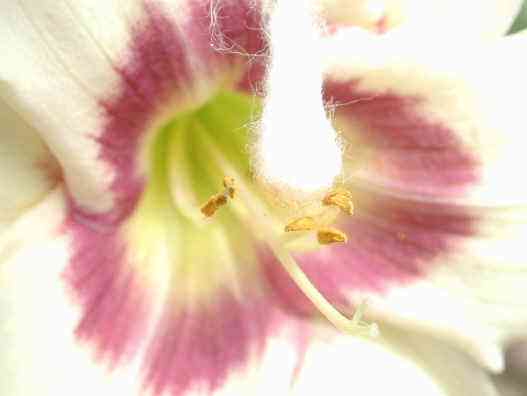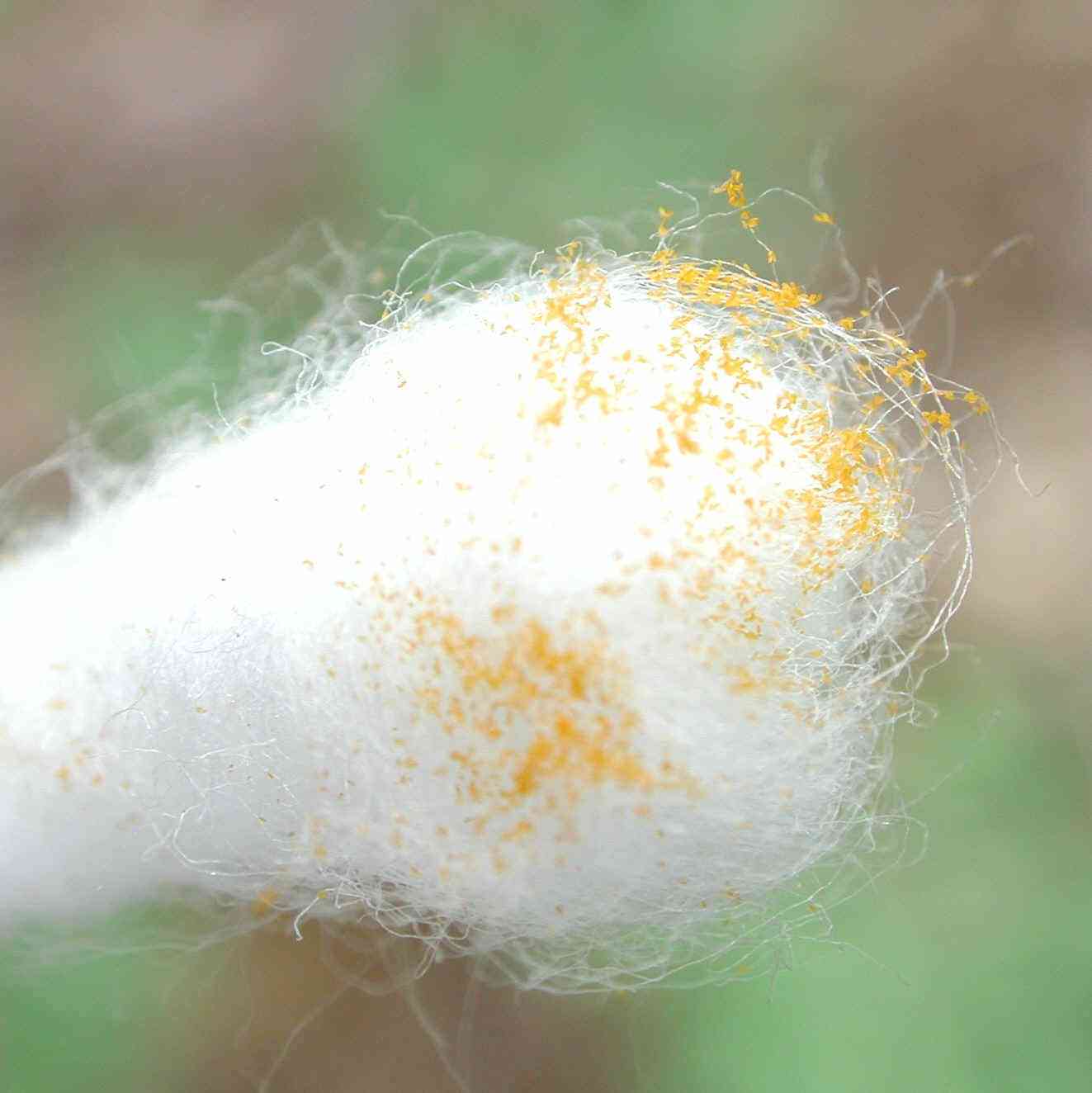 |
Swabbing the Pollen
Hand pollination should be done early in the day, before pollen is killed by heat or dryness. |
Hand Pollination
A Gardener's Illustrated Guide
Photos and text copyright 2001, David L. Green, All rights reserved
We'll start with a lily, which has large flowers and large organs, with colorful pollen as well. The first step is to understand and identify the organs. Since lilies are propagated by bulbs rather than seeds in the home garden, this isn't one that we would usually want to hand pollinate. But someone who is trying to develop new varieties might do so. At any rate it makes a clear example for our photo guide. You may wish to consult at times with the glossary, which defines terms.
 |
Swabbing the Pollen
Hand pollination should be done early in the day, before pollen is killed by heat or dryness. |
There are five visible filaments, called stamens, rising from the center of the flower. Each stamen has a yellow, pollen-bearing anther at its tip. Another stalk, the pistil also rises from the center, and extends outward beyond the stamens. It is divided at the tip into two lobes that are sticky at the surface. This is called the stigma. The stamens and anthers are male organs, the pistil and stigma are female. With lilies, both are present in the same flower. There are almost an infinite number of variations in the form and structure, but these organs are usually present. Sometimes flowers have only male parts, or at least only the male parts are functional; others have the female.
The design of a lily flower indicates a large pollinator is most efficient. Bumblebees and hummingbirds would be able to transfer pollen from anther to stigma more effectively than a smaller bee. Indeed, many tiny solitary bees will gather pollen from the anthers, yet they never touch the stigma, showing that all pollinators are not equal. For purposes of illustration, we will assume that the lily flower is self fertile. In a self fertile flower the stigma is receptive to pollen from the same flower.
 |
Cotton Swab This pollen is dark yellow. Many tiny grains make up the colorful mass you see here. Some pollen is pale yellow; Pollen comes in just about any color you can imagine. A cotton swab, such as a Q-tip (Trademark) can be used, but a small artist's brush, or even your finger will work. |
Pollen contains the male reproductive
cells of a plant. Pollens come in two types. Some pollen is light and fluffy, such as
ragweed, or pine, or pecan pollen. This is intended to blow in the wind. It has very low
nutritive value. Bees will gather these pollens, but only when they are desperate.
Another group of pollens, such as this lily pollen, or goldenrod, or
cucumber, is heavy and sticky, and has a high protein content. It cannot be blown in the
wind, it must be gathered and distributed by insects or other active pollinators. You can
laugh, whenever someone claims that goldenrod gives them hayfever. The only way you could
get goldenrod pollen in your nasal passages is to stick a flower up your nose. The plants
trade some food to the bees in exchange for the transfer of pollen, called pollination.
Carpenter
Bee Bees are the world's best pollinators for many of our crops. They are fuzzy and electrostatically charged, which also helps to hold the sticky pollen grains. Note the pollen coating on this little gal, who is working on a privet bush. Pollination can be accomplished also by flies, beetles, birds, butterflies, bats, and many other creatures. When we we hand pollinate, we become the pollinator. |
|
 |
Touching the Stigma The pollen on our swab is now adhering to the sticky stigma. It will germinate and grow a tube down the interior of the style, to the ovary, where each pollen grain can fertilize an ovule. Ovules are the incipient seeds, which contain the female reproductive cells. Most fruits cannot develop unless the seeds form, and usually the completeness of pollination determines the quality of the fruit. Blackberry example |